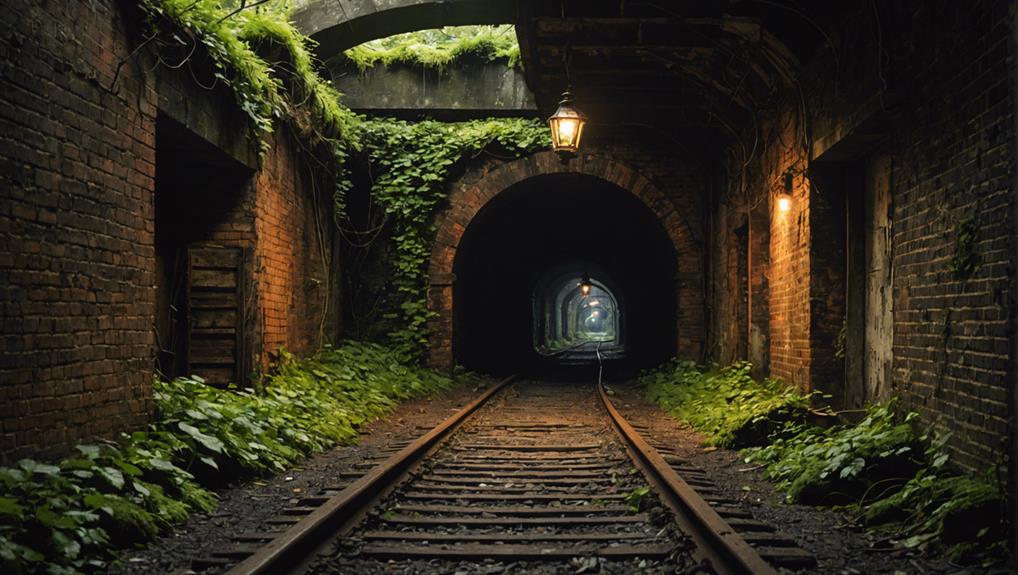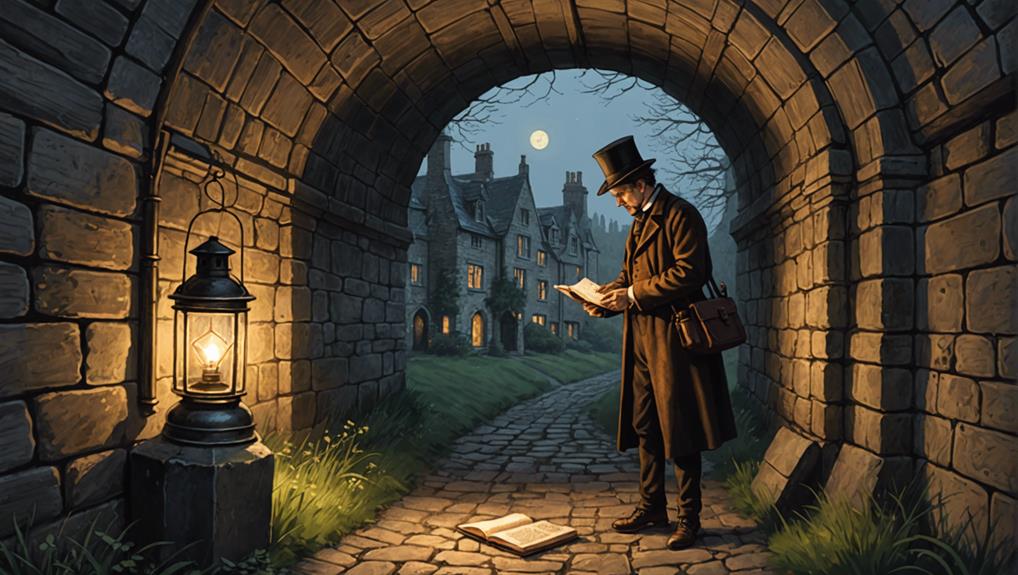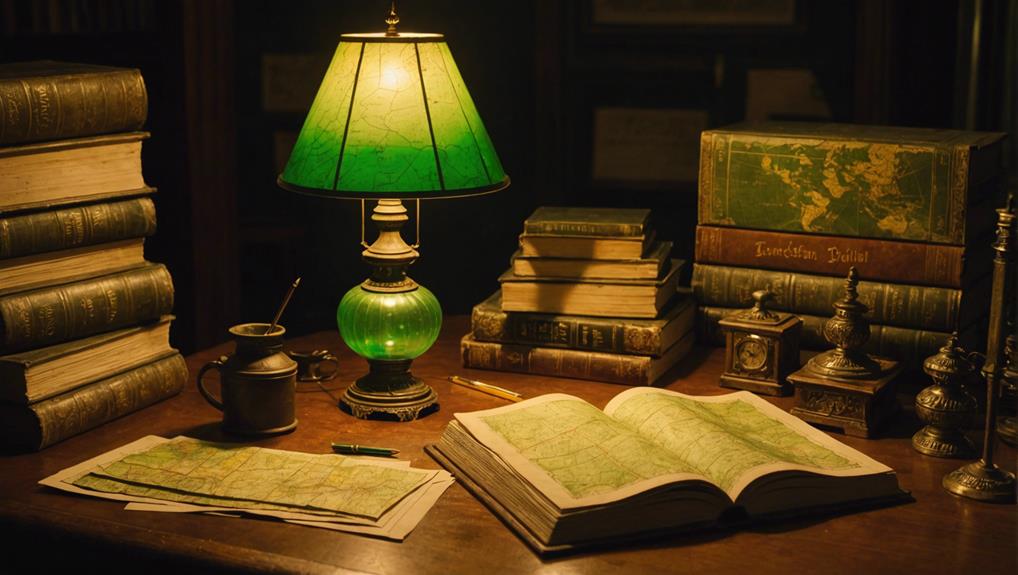Discover how Luton’s community adapts to road closures and infrastructure upgrades, turning short-term disruption into long-term sustainability and resilience. Learn more now!
As you venture into the historic Old Warden Tunnel in Bedfordshire, uncover the secrets of a 19th-century engineering marvel that transformed the region's economy. To fully explore its history, understand the original purpose of this direct transportation route between Bedford, Hitchin, and London. Research the tunnel's innovative construction in 1853, and identify signs of deterioration, such as cracks and rust. Note the original materials used, like brick, stone, and iron, showcasing traditional craftsmanship. Take in the unique features, like the egg-shaped design, and analyze historical records and maps to unravel mysteries. Now, go beyond the surface and discover more about this fascinating tunnel.
Understand Old Warden's Original Purpose
When you explore the history of Old Warden Tunnel, it's important to acknowledge that its original purpose was to provide a direct and efficient transportation route for passengers and goods between Bedford, Hitchin, and London. This essential connection facilitated economic growth and regional development in Bedfordshire, making the tunnel a key component of the region's railway network.
As you investigate the tunnel's past, you'll uncover its legacy and explore its impact on the local community. The tunnel's construction in 1853 marked a significant milestone in the region's transportation infrastructure, revolutionizing the way people and goods moved through the area. By understanding the tunnel's original purpose, you'll gain a deeper appreciation for its significance in shaping the region's history.
As you learn more about the tunnel's role in connecting key locations, you'll begin to uncover the rich history and heritage of Bedfordshire.
Research the Tunnel's Construction History
Delving into the construction history of Old Warden Tunnel reveals a fascinating story of 19th-century engineering prowess. As you research the tunnel's construction, you'll uncover the historical context in which it was built.
Here are some key aspects to explore:
- Construction techniques: Learn about the innovative methods used to build the tunnel, such as the excavation techniques and materials used.
- Historical context: Understand the significance of the tunnel's construction in 1853, including its role in connecting Bedford to Hitchin and London.
- Economic impact: Discover how the tunnel contributed to the economic growth of the region, facilitating trade and commerce.
- Social significance: Explore how the tunnel affected the local community, including its impact on employment and daily life.
Look for Signs of Deterioration

To guarantee the tunnel's structural integrity, it's crucial to venture deeper into the Old Warden Tunnel. Scrutinize the walls, ceiling, and floors for telltale signs of deterioration, such as cracks, crumbling surfaces, or sagging sections that could indicate structural weaknesses.
Keep an eye out for water ingress, which can compromise the tunnel's integrity, and note any rust, corrosion, or damage to metal components that may signal decay. Additionally, pay attention to any vegetation growth or root intrusions, which can further weaken the tunnel's structure.
Documenting any significant changes in the tunnel's condition over time will help track its deterioration and inform preservation efforts. It's vital to assess the tunnel's structural integrity to develop effective maintenance practices and conservation strategies.
Identify Original Building Materials
You'll explore that the Old Warden Tunnel's original building materials, including brick, stone, and iron, reflect the architectural and engineering techniques of the Midland Railway's construction period. As you investigate the tunnel, you'll notice the use of handmade bricks and locally sourced stone, which were characteristic of Victorian-era construction techniques. The tunnel's lining, composed of traditional brickwork, showcases the craftsmanship of the mid-19th century.
During your investigation, take note of the following features:
- Material analysis: Observe how the brick, stone, and iron materials have withstood the test of time, revealing the durability of the original construction.
- Construction techniques: Marvel at the intricate brickwork and stonework, which demonstrate the skill of the craftsmen who built the tunnel.
- Preservation efforts: Appreciate the restoration process that has helped maintain the tunnel's original charm, ensuring its historical significance is preserved for future generations.
- Restoration process: Recognize the importance of ongoing preservation efforts to protect the tunnel's original materials and maintain its structural integrity.
As you explore further into the tunnel's history, you'll gain a deeper appreciation for the engineering feats and craftsmanship that have made this tunnel a reflection of the past.
Take Note of Unique Features

While exploring the Old Warden Tunnel, you're struck by its unique features, which set it apart from other railway tunnels of its era. The tunnel's egg-shaped design, for instance, is a distinctive characteristic that adds to its historical significance.
As you venture deeper, you'll notice the water ingress at one end of the tunnel, showcasing the varying conditions within the structure. This contrast highlights the tunnel's remarkable engineering excellence, which has allowed it to withstand the test of time with minimal collapses.
Outside the Northern portal, you'll find old scrap metal, including an engine, which serves as a poignant reminder of the tunnel's industrial remnants. These remnants offer a glimpse into the tunnel's rich history, making your exploration all the more fascinating.
As you take in the tunnel's unique features, you'll develop a deeper appreciation for the engineering prowess and historical significance of this Bedfordshire landmark.
Document Findings With Photography
Capture the essence of Old Warden Tunnel's unique features through photography, documenting every nuance of its historic structure and showcasing your improved skills behind the lens. As you venture into the tunnel, remember to employ effective lighting techniques and composition skills to highlight its distinctive characteristics. To make sure you're well-equipped, don't forget to bring along necessary photography equipment, such as a tripod, lenses, and a camera with good low-light performance.
Here are some key photography tips to keep in mind:
- Shoot from multiple angles: Experiment with different perspectives to add depth and visual interest to your photos.
- Pay attention to lighting: Use natural light or invest in a portable lighting kit to illuminate the tunnel's darker areas.
- Highlight unique features: Focus on the tunnel's egg-shaped structure, water ingress, and other distinctive elements that tell its story.
- Edit your photos: Use editing tools to enhance the colors, contrast, and brightness of your images, making them more engaging and informative.
Record Observations and Insights

As you switch gears from documenting the tunnel's visual story through photography to recording your observations and insights, take a moment to reflect on the rich history waiting to be uncovered.
Note the tunnel's construction date of 1853, which provides vital context for understanding its historical significance. Record the tunnel's impressive length of 807 meters to grasp its scale.
Don't forget to document the tunnel's closure in 1963 due to the Beeching cuts, which adds to its historical significance. Did you know that the tunnel made a film debut in 'Those Magnificent Men'? This fun fact adds a touch of glamour to the tunnel's story.
As you explore the tunnel, take note of any unique architectural details, such as structural elements that reveal its age and purpose. Record these observations to gain a thorough understanding of the tunnel's history and significance.
Explore the Surrounding Landscape
Beyond the tunnel's entrance, a picturesque landscape unfolds, boasting a higher elevation than initially meets the eye. As you venture further, you'll discover hidden treasures waiting to be uncovered. To make the most of your nature exploration, consider the following tips:
- Capture scenic views: Bring your camera to snap stunning landscape photography, taking in the rolling hills and unique features of the area.
- Explore the waterfall: Take a closer look at the waterfall near the tunnel entrance, adding to the area's natural beauty.
- Uncover mysterious debris: Investigate the scattered car parts, wheels, and engine remnants, sparking curiosity about their origins.
- Take in the unique scenery: Absorb the intriguing blend of natural and industrial elements, making this landscape truly one-of-a-kind.
As you explore the surrounding landscape, you'll find yourself immersed in an environment that's both serene and thought-provoking. The juxtaposition of natural beauty and industrial remnants creates a unique atmosphere, perfect for those who appreciate the unusual. Take your time to soak in the scenery, and who knows, you might just stumble upon more hidden treasures waiting to be discovered.
Analyze Historical Records and Maps

You're now ready to unravel the mysteries of Old Warden Tunnel by examining historical records and maps that reveal its fascinating past.
Delve into the archives to uncover the original purpose and significance of the tunnel, tracing its track connections and routes.
Study maps from the operational period to visualize the railway route and its connections to other areas.
| Document Type | Information Uncovered |
|---|---|
| Historical records | Original purpose, significance, and construction details |
| Old maps | Railway route, track connections, and surrounding landscape |
| Archived documents | Maintenance, repairs, and closure details |
| Historical photographs | Visual representation of the tunnel's appearance and surroundings |
Respect the Site's Historical Integrity
When exploring Old Warden Tunnel, it's important that you preserve the original structure and features to respect its historical significance. This means avoiding any actions that could potentially damage or vandalize the site, as these actions would compromise the integrity of the tunnel's history.
By doing so, you'll be able to maintain the authenticity of the site, allowing future generations to appreciate its rich legacy.
To make sure you're respecting the site's historical integrity, keep the following guidelines in mind:
- Preserve the original structure: Avoid causing damage to the tunnel's walls, floors, or ceilings, as these elements are essential to understanding its history.
- Take only photographs and memories: Leave artifacts and structures untouched, allowing them to remain intact for future visitors.
- Educate yourself: Learn about the tunnel's past to appreciate its role in the region's history and significance.
- Follow local guidelines: Adhere to any rules or guidelines set by local authorities or preservation groups to honor the historical value of the tunnel.
Conclusion
As you explore the mysteries of Old Warden Tunnel, remember to respect the site's historical integrity. Your discoveries, no matter how small, contribute to a richer understanding of this Bedfordshire treasure.
By following these 10 tips, you'll uncover the tunnel's secrets, and its ancient stones will whisper stories of the past. Imagine the tunnel's original purpose, its construction, and the people who built it, all coming alive in your imagination.